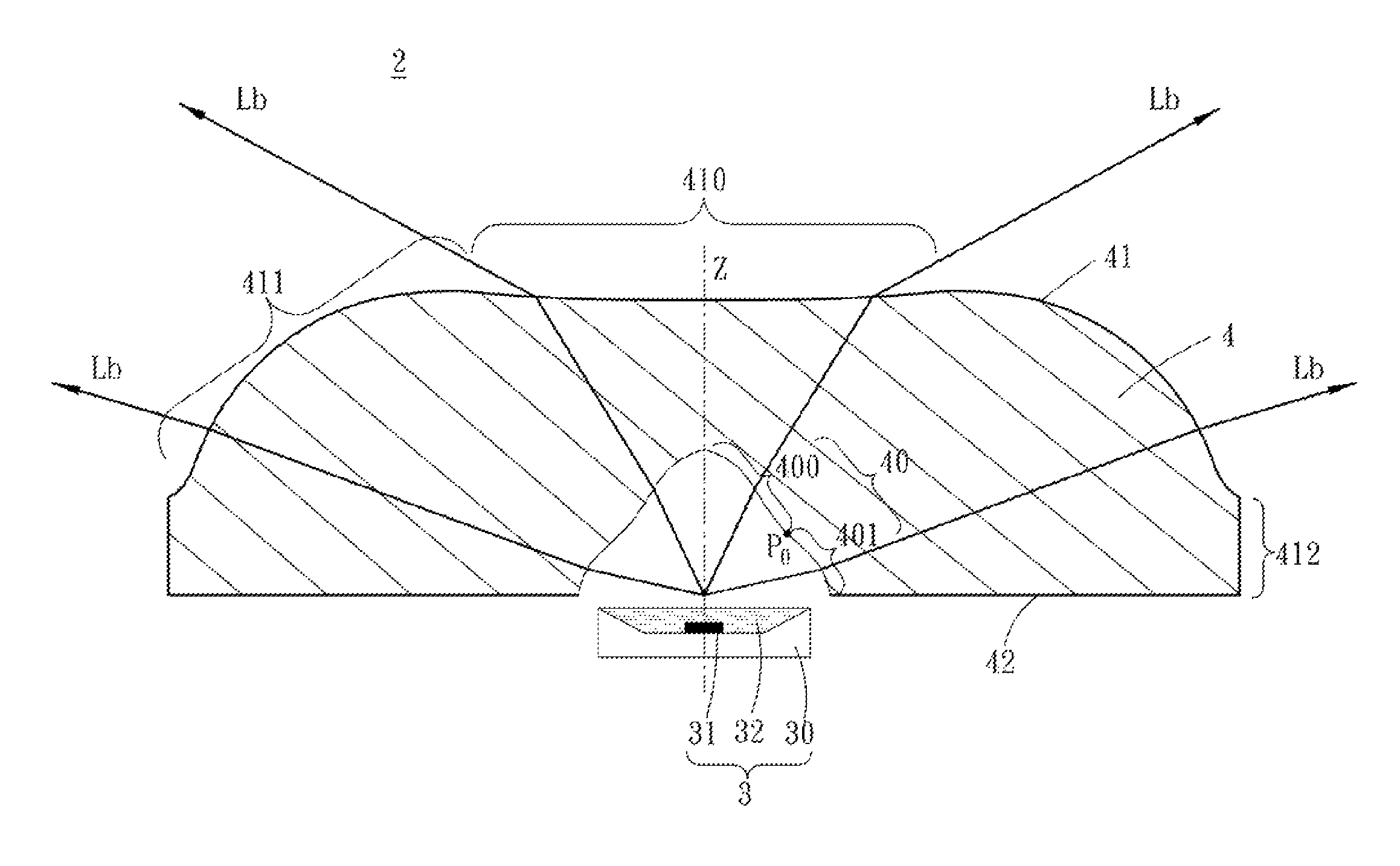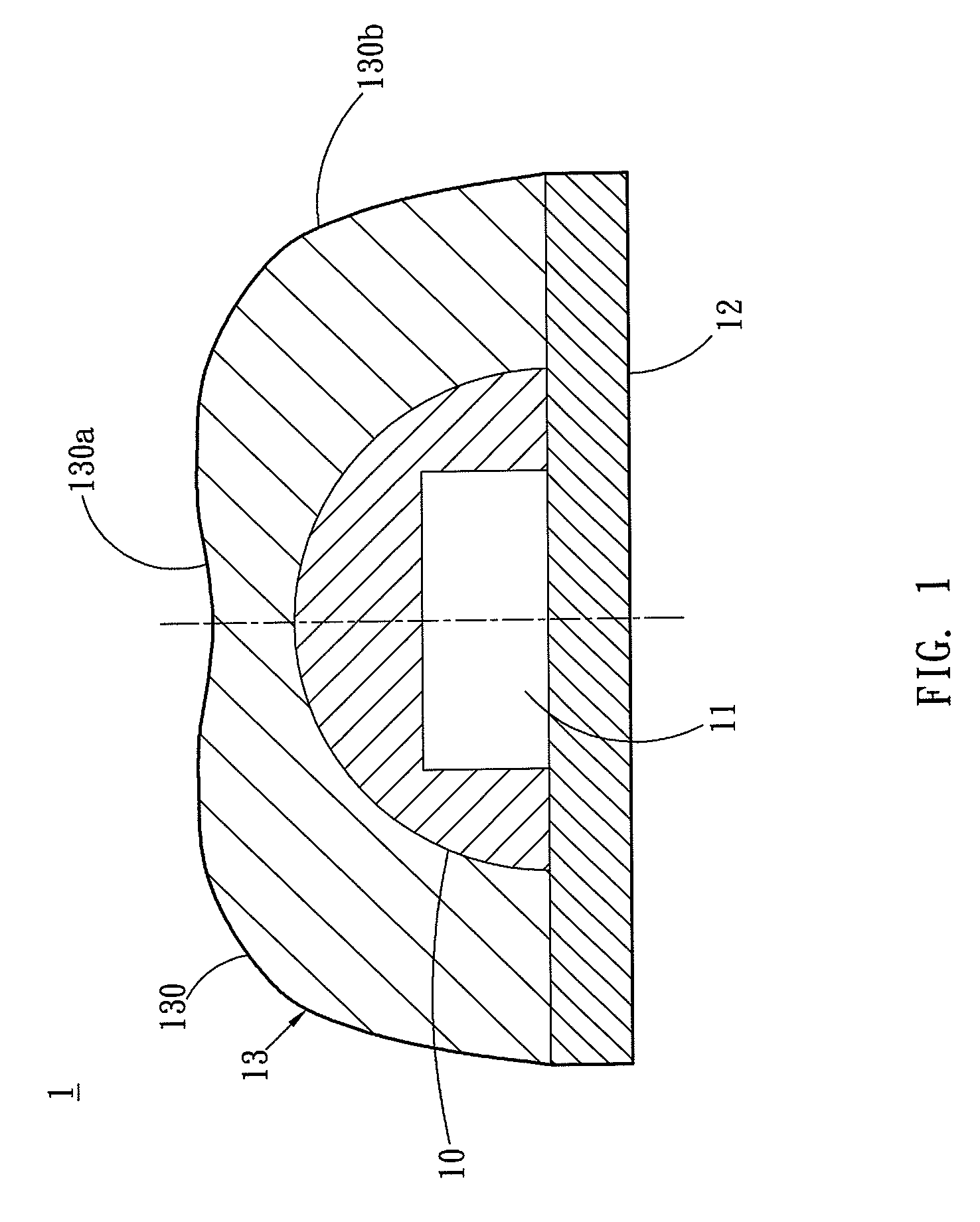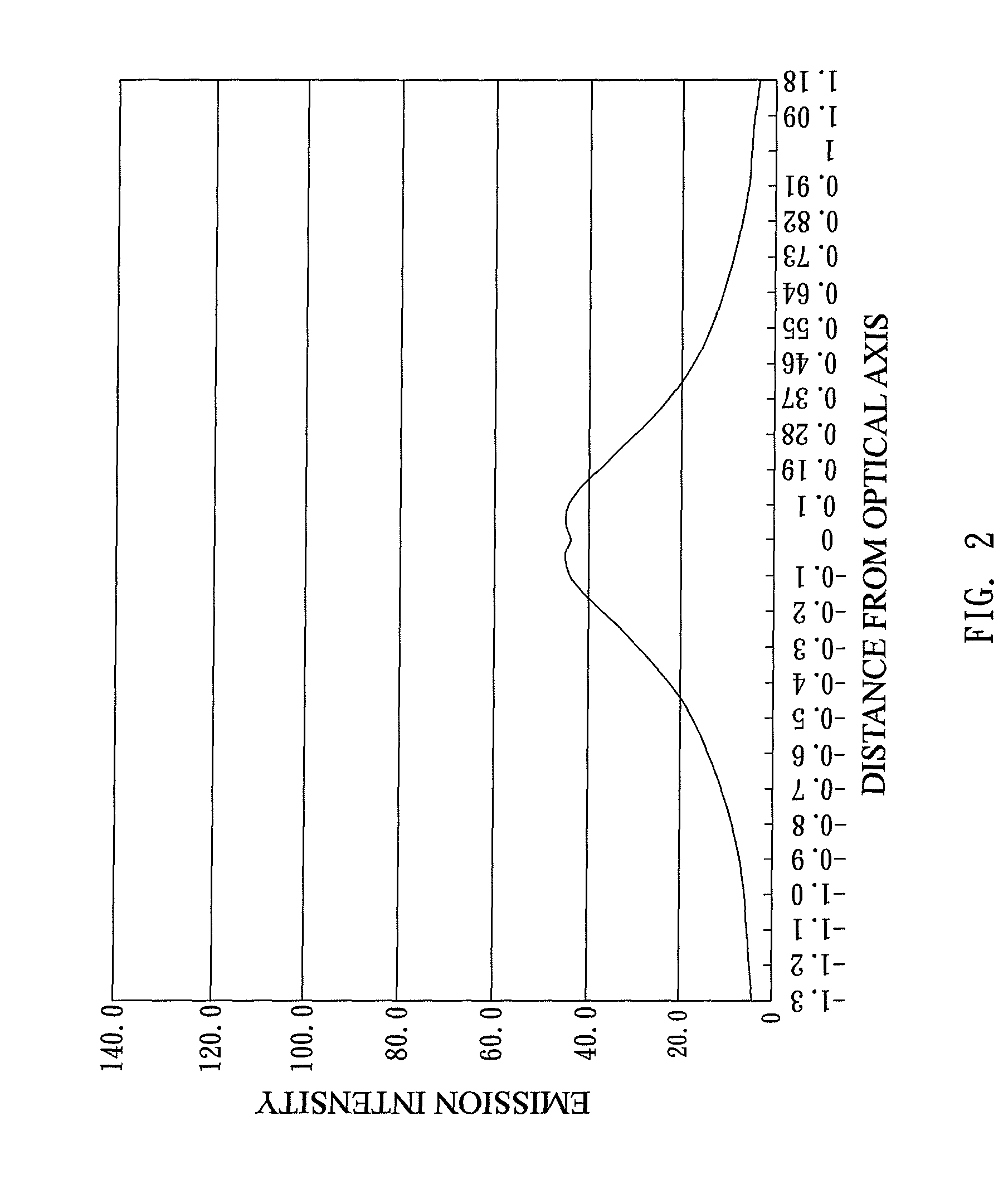LED lens and light source device using the same
a technology of led light source and lens, which is applied in the direction of semiconductor devices for light sources, lighting and heating apparatus, instruments, etc., can solve the problems of difficult to achieve the requirement of high scattering ability, difficult to have both perfect scattering ability and perfect uniformity of scattering properties, etc., to improve the light emission angle of light source devices, reduce the number of led light source devices, and improve the color uniformity of light source devices
- Summary
- Abstract
- Description
- Claims
- Application Information
AI Technical Summary
Benefits of technology
Problems solved by technology
Method used
Image
Examples
first embodiment
[0087]Please refer to FIGS. 8 and 9, they are a cross-sectional view illustrating a light source device of the present invention thereof and a polar candela distribution plot thereof, respectively.
[0088]In the Table (1) listed below, there are shown the coefficients of the aspheric surface formula (6) constituting the light emitting surface 41 of the LED lens 4 in the first embodiment:
[0089]
TABLE (1)cKA2A4A60.0110−8.188E−032.345E−02−3.123E−03A8A10A12A14A161.865E−04−6.214E−061.187E−07−1.215E−095.164E−12
[0090]In the Table (2) listed below, there are shown data referred to FIG. 5 and the refractive index (Nd) of the LED lens 4 in the first embodiment:
[0091]
TABLE (2)OI0OP0m′cosθ0(mm)(mm)tanθk(mm)cosθctanθe0.6681.8691.3411.0250.897−0.0596.224L3REhRII0E0L2(mm)(mm)(mm)(mm)(mm)(mm)Nd3.61515.0000.6963.5002.1990.5811.490
[0092]In the first embodiment, the LED lens 4 is made from PMMA having a refraction index of 1.49. The effective divergence angle of the light source device 2 using the LED l...
second embodiment
[0097]Please refer to FIGS. 10 and 11, they are a cross-sectional view illustrating a light source device of the present invention thereof and a polar candela distribution plot thereof, respectively.
[0098]In the Table (3) listed below, there are shown the coefficients of the aspheric surface formula (6) constituting the light emitting surface 41 of the LED lens 4 in the second embodiment:
[0099]
TABLE (3)cKA2A4A6−6.418E+12−4.504E+041.561E−022.308E−03−2.770E−04A8A10A12A148.028E−06−4.706E−08−1.562E−091.907E−11
[0100]In the Table (4) listed below, there are shown data referred to FIG. 5 and the refractive index (Nd) of the LED lens 4 in the second embodiment:
[0101]
TABLE (4)OI0OP0m′cosθ0(mm)(mm)tanθk(mm)cosθctanθe0.6681.8691.3411.0250.897−0.05919.559L3REhRII0E0L2(mm)(mm)(mm)(mm)(mm)(mm)Nd3.435150.6963.52.1990.1761.49
[0102]In the second embodiment, the LED lens 4 is made from PMMA having a refraction index of 1.49. The effective divergence angle of the light source device 2 using the LED l...
third embodiment
[0106]Please refer to FIGS. 12 and 13, they are a cross-sectional view illustrating a light source device of the present invention thereof and a polar candela distribution plot thereof, respectively.
[0107]In the Table (5) listed below, there are shown the coefficients of the aspheric surface formula (6) constituting the light emitting surface 41 of the LED lens 4 in the third embodiment:
[0108]
TABLE (5)cKA2A4A6−6.418E+12−2.975E+041.957E−022.253E−03−2.770E−04A8A10A12A148.017E−06−4.706E−08−1.562E−091.907E−11
[0109]In the Table (6) listed below, there are shown data referred to FIG. 5 and the refractive index (Nd) of the LED lens 4 in the third embodiment:
[0110]
TABLE (6)OI0OP0m′cosθ0(mm)(mm)tanθk(mm)cosθctanθe0.6052.3001.5980.9550.9930.22416.664L3REhRII0E0L2(mm)(mm)(mm)(mm)(mm)(mm)Nd3.52414.800.7673.81.90.2111.51
[0111]In the third embodiment, the LED lens 4 is made from transparent resin material having a refraction index of 1.51. The effective divergence angle of the light source devic...
PUM
 Login to View More
Login to View More Abstract
Description
Claims
Application Information
 Login to View More
Login to View More - R&D
- Intellectual Property
- Life Sciences
- Materials
- Tech Scout
- Unparalleled Data Quality
- Higher Quality Content
- 60% Fewer Hallucinations
Browse by: Latest US Patents, China's latest patents, Technical Efficacy Thesaurus, Application Domain, Technology Topic, Popular Technical Reports.
© 2025 PatSnap. All rights reserved.Legal|Privacy policy|Modern Slavery Act Transparency Statement|Sitemap|About US| Contact US: help@patsnap.com



